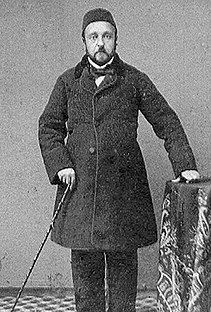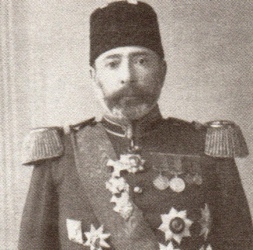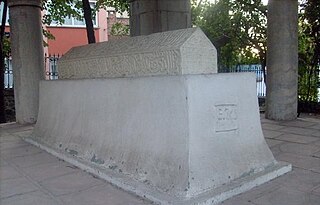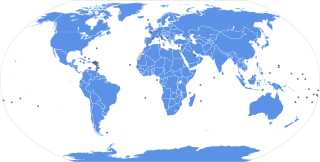The Ottoman Turks were the Turkish-speaking population of the Ottoman Empire who formed the base of the state's military and ruling classes. Reliable information about the early history of Ottoman Turks is scarce, but they take their Turkish name, Osmanlı, from the house of Osman I, the founder of the dynasty that ruled the Ottoman Empire for its entire 624 years. After the expansion from its home in Bithynia, the Ottoman principality began incorporating other Turkish-speaking Muslims and non-Turkish Christians, becoming the Ottoman Turks and ultimately the Turks of the present. The Ottoman Turks blocked all land routes to Europe by conquering the city of Constantinople, the capital city of the Byzantine Empire, and Europeans had to find other ways to trade with Eastern countries.

The Ottoman Dynasty was made up of the members of the imperial House of Osman, also known as the Ottomans. According to Ottoman tradition, the family originated from the Kayı tribe branch of the Oghuz Turks, under Osman I in northwestern Anatolia in the district of Bilecik Söğüt. The Ottoman dynasty, named after Osman I, ruled the Ottoman Empire from c. 1299 to 1922.

The Eyalet of Temeşvar, known as Eyalet of Yanova after 1658, was a first-level administrative unit (eyalet) of the Ottoman Empire located in the Banat region of Central Europe.
Hoca SadeddinEfendi was an Ottoman scholar, official, and historian, a teacher of Ottoman sultan Murad III. His name is transcribed differently: Sa'd ad-Din, Sa'd al-Din, Sa’adeddin, Sadeddin, etc. He was also called "Hoca Efendi", "Koca Hoca Efendi" and with the title of "Câmi'-ür Riyâseteyn".

Mehmed Kâmil Pasha, also spelled as Kiamil Pasha, was an Ottoman statesman of Turkish Cypriot origin in the late-19th-century and early-20th-century. He was the Grand Vizier of the Empire during four different periods.

Salih Hulusi Pasha, known as Salih Hulusi Kezrak after the Turkish Surname Law of 1934, was one of the last Grand Viziers of the Ottoman Empire, under the reign of the last Ottoman Sultan Mehmed VI, between 8 March 1920 and 2 April 1920. Since he had been unable to form a government, and as part of the chain of events following the occupation of Istanbul by the Allies, he was dismissed from office by the sultan under foreign pressure on 2 April. His dismissal was to be followed by the official closure of the Parliament itself on 5 April, thus putting an end to the Second Constitutional Era of the Ottoman Empire.

Ali Rıza Pasha was an Ottoman military officer and statesman, who was one of the last Grand Viziers of the Ottoman Empire, under the reign of the last Ottoman Sultan Mehmed VI, between 14 October 1919 and 2 March 1920.

Mahmud Shevket Pasha was an Ottoman general and statesman, known for his active role in establishing a military aviation program. He was Prime Minister of the Ottoman Empire from 23 January 1913 until his death by assassination.

Mehmet Cemaleddin Efendi (1848–1917) was a senior judge of the Ottoman Empire.

The Köprülü era was a period in which the Ottoman Empire's politics were frequently dominated by a series of grand viziers from the Köprülü family. The Köprülü era is sometimes more narrowly defined as the period from 1656-1683, as it was during those years that members of the family held the office of grand vizier uninterruptedly, while for the remainder of the period they occupied it only sporadically. The Köprülüs were generally skilled administrators, and are credited with reviving the empire's fortunes after a period of military defeat and economic instability. Numerous reforms were instituted under their rule, which enabled the empire to resolve its budget crisis and stamp out factional conflict in the empire.
The Battle of Bapheus occurred on 27 July 1302, between an Ottoman army under Osman I and a Byzantine army under George Mouzalon. The battle ended in a crucial Ottoman victory, cementing the Ottoman state and heralding the final capture of Byzantine Bithynia by the Turks.
Halil İnalcık was a Turkish historian of the Ottoman Empire. His highly influential research centred on social and economic approaches to the empire. His academic career started at Ankara University, where he completed his PhD and worked between 1940 and 1972. Between 1972 and 1986 he taught Ottoman history at the University of Chicago. From 1994 on he taught at Bilkent University, where he founded the history department. He was a founding member of Eurasian Academy.
This is a male family tree for all the Ottoman Sultans and their mothers. On the mother's side, flags denote their ethnic origin. For nations that did not exist in their time, modern equivalents have been used instead.

Devlet Hatun was the twelfth wife of Ottoman Sultan Bayezid I and the mother of Mehmed I.
Köse Mihal accompanied Osman I in his ascent to power as an Emir and founder of the Ottoman Empire. He is considered to be the first significant Byzantine renegade and convert to Islam to enter Ottoman service.

The Vilayet of Sivas was a first-level administrative division (vilayet) of the Ottoman Empire, and was one of the Six Armenian vilayets. The vilayet was bordered by Erzurum Vilayet to the east, Mamuretülaziz Vilayet to the south-east, the Trebizond Vilayet to the north and Ankara Vilayet to the west.
Bayezid Osman, also known as Osman Bayezid Osmanoğlu with a surname as required by the Republic of Turkey, or known by the Ottoman imperial name as Şehzade (Prince) Bayezid Osman Efendi, was the 44th Head of the Imperial House of Osman, which ruled the Ottoman Empire from 1299 to 1922. The monarchy was abolished in 1922, with the modern Republic of Turkey replacing it.

The following outline is provided as an overview of and topical guide to the Ottoman Empire:
Mongol invasions of Anatolia'and Mongolian sam culture occurred at various times, starting with the campaign of 1241–1243 that culminated in the Battle of Köse Dağ. Real power over Anatolia was exercised by the Mongols after the Seljuks surrendered in 1243 until the fall of the Ilkhanate in 1335. Because the Seljuk Sultan rebelled several times, in 1255, the Mongols swept through central and eastern Anatolia. The Ilkhanate garrison was stationed near Ankara. Timur's invasion is sometimes considered the last invasion of Anatolia by the Mongols. Remains of the Mongol cultural heritage still can be seen in Turkey, including tombs of a Mongol governor and a son of Hulagu.

Lütfi Pasha was an Ottoman statesman and grand vizier of the Ottoman Empire under Suleiman the Magnificent from 1539 to 1541.



















